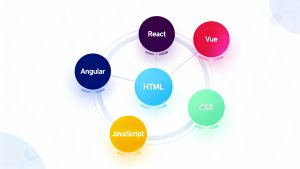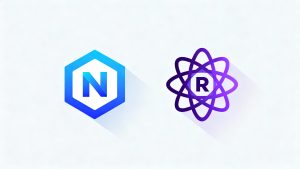In today’s fast-paced, digitally driven world, cloud computing is no longer optional. However, relying on a single cloud provider can limit scalability, increase risk, and create lock-in. That’s where multicloud architecture comes into play.
Multicloud refers to the use of two or more cloud computing services from different vendors (e.g., AWS, Azure, Google Cloud Platform). It allows organizations to build a flexible, resilient, and high-performing infrastructure by leveraging the unique strengths of each cloud. Let us learn more in this blog.
What Is a Multi Cloud Strategy?
A multicloud strategy is an approach where businesses use multiple public cloud platforms simultaneously. This could be for running different parts of the same application or diversifying their workloads to avoid vendor dependency.
Why do this?
- Better resilience
- Compliance and data sovereignty
- Performance optimization
- Avoid vendor lock-in
For example, an e-commerce platform might host its main application on AWS, its analytics on Google Cloud BigQuery, and payment gateway in Azure for compliance reasons.
Multi Cloud Architecture
Multicloud architecture varies based on application needs. Here are three common types:
- Split-stack architecture – Frontend on one cloud, backend on another.
- Redundant architecture – Same application deployed across multiple clouds.
- Service-specific architecture – Use the best cloud for each service (e.g., GCP for AI, AWS for compute).
Example: Terraform Code for Deploying VM on AWS and GCP
hcl
# AWS EC2 Instance
provider "aws" {
region = "us-east-1"
}
resource "aws_instance" "web" {
ami = "ami-0c55b159cbfafe1f0"
instance_type = "t2.micro"
tags = {
Name = "Multicloud-AWS"
}
}
# Google Cloud VM Instance
provider "google" {
project = "my-gcp-project-id"
region = "us-central1"
credentials = file("gcp-creds.json")
}
resource "google_compute_instance" "vm_instance" {
name = "multicloud-gcp"
machine_type = "f1-micro"
zone = "us-central1-a"
boot_disk {
initialize_params {
image = "debian-cloud/debian-10"
}
}
network_interface {
network = "default"
access_config {}
}
}This example shows deploying VMs on both AWS and GCP using Terraform, allowing developers to maintain infrastructure-as-code across clouds.
What are Multi Cloud Services?
Each cloud provider has its own strengths:
- AWS: Scalability, enterprise-grade storage, broadest range of services
- Azure: Seamless integration with Microsoft products
- Google Cloud: Strong in AI/ML, BigQuery for analytics
You can combine services like this:
bash
# Pseudo-Architecture
– Frontend → Azure App Service
– Backend APIs → AWS Lambda
– Analytics → Google BigQuery
You can orchestrate these through:
- Terraform
- Kubernetes
- CI/CD tools like GitHub Actions, Jenkins, or Azure DevOps
API Integration Across Clouds (Node.js Example)
Let’s say your backend on AWS needs to fetch data from Google Cloud’s ML model endpoint.
javascript
// AWS Lambda Function (Node.js)
const axios = require('axios');
exports.handler = async (event) => {
const response = await axios.post('https://ml.googleapis.com/v1/projects/your-project/models/your-model:predict', {
instances: [{ input: event.body }]
}, {
headers: {
Authorization: `Bearer ${process.env.GOOGLE_ACCESS_TOKEN}`
}
});
return {
statusCode: 200,
body: JSON.stringify(response.data)
};
};This demonstrates how cloud services can talk to each other securely across platforms.
Multicloud vs Hybrid Cloud
When organizations begin exploring cloud architectures, two terms often come up: multicloud and hybrid cloud. While they sound similar and sometimes overlap in conversation, they represent distinct strategies with different implications for infrastructure, tooling, and business outcomes.
Definition and Core Philosophy
Multicloud refers to an approach where a business leverages multiple public cloud service providers—such as Amazon Web Services (AWS), Microsoft Azure, and Google Cloud Platform (GCP)—to host different workloads or even the same workload in parallel. The idea is to use the best-of-breed services from each provider or to diversify risk by not depending solely on one vendor.
Hybrid cloud, in contrast, describes an environment that connects an organization’s private infrastructure (like an on-premise data center or a private cloud) with public cloud services. The goal here is to extend the traditional data center with the flexibility and scalability of public cloud, without completely abandoning existing investments.
Infrastructure Setup
In a multicloud setup, all components typically run on public cloud platforms, but across multiple vendors. For example, a company might deploy its web applications on AWS while using Google Cloud’s BigQuery for data analytics and Azure for Active Directory integration. This model creates a cloud-to-cloud integration landscape where the entire architecture resides in the public cloud ecosystem—just distributed across providers.
In a hybrid cloud architecture, the infrastructure bridges private systems (such as company-owned servers, VMware-based virtual environments, or internal Kubernetes clusters) with public cloud platforms. A business might run sensitive workloads or legacy applications in-house while offloading customer-facing services or backup systems to a cloud provider like AWS or Azure. The key architectural feature is the integration between these distinct environments to enable seamless operation, data flow, and security.
Advantages of Multicloud
- Improved Uptime: If AWS goes down, apps on GCP keep running
- Scalability: Spin up services based on regional demand
- Data Sovereignty: Host data in specific jurisdictions
- Cost Optimization: Use pricing competition to your advantage
Challenges of Multicloud
- Complex DevOps Pipelines
You’ll need multi-cloud compatible CI/CD setups. - Security & Governance
Managing identity (IAM), secrets, and audit logs across platforms. - Monitoring
Tools like Datadog, Prometheus, or New Relic must aggregate cross-cloud data.
Kubernetes for Multicloud
Kubernetes (K8s) allows you to deploy containers across cloud providers.
Multicloud K8s Manifest Example:
yaml
apiVersion: apps/v1
kind: Deployment
metadata:
name: app-deployment
spec:
replicas: 2
selector:
matchLabels:
app: multicloud-app
template:
metadata:
labels:
app: multicloud-app
spec:
containers:
- name: multicloud-app
image: myrepo/multicloud-app:latest
ports:
- containerPort: 80Deploy this on EKS (AWS) and GKE (Google) clusters for redundancy and scale.
Real-World Multi Cloud Examples
- Netflix: Uses AWS for content delivery, Google Cloud for ML
- Spotify: Uses Google Cloud for data processing and AWS for web services
- HSBC: Uses Azure, AWS, and Google Cloud for global financial operations
Cost vs Value of Multicloud
Multicloud Cost Considerations:
- Network egress fees
- Staff training across platforms
- Tooling and licensing
However, value includes:
- Regulatory compliance
- Vendor flexibility
- Performance tuning
- Business continuity
Use tools like CloudHealth, Spot.io, and FinOps dashboards to manage costs.
Conclusion
Multicloud is more than just a buzzword—it’s a strategic approach to modern cloud computing. By combining services from AWS, Azure, Google Cloud, and others, businesses gain the flexibility to innovate faster, reduce risk, and scale intelligently.
From Terraform-powered infrastructure to containerized applications on Kubernetes, the tools and techniques for multi cloud development are accessible—and growing in capability.
With the right architecture and mindset, multicloud can future-proof your tech stack, deliver superior performance, and ensure your business remains agile in a competitive digital landscape.



